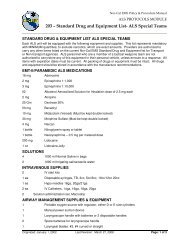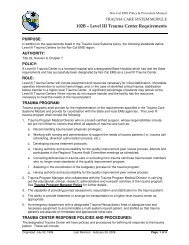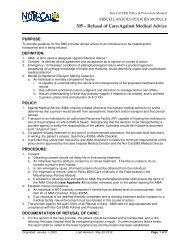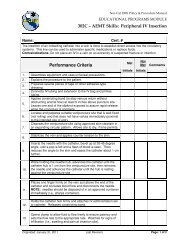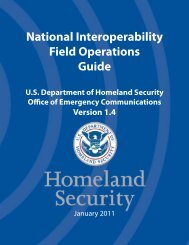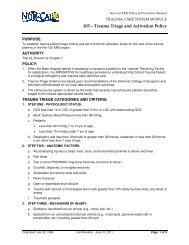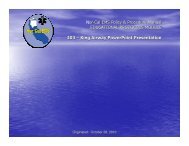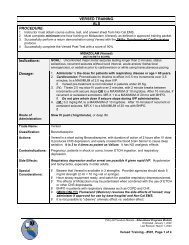King Airway
King Airway
King Airway
- No tags were found...
You also want an ePaper? Increase the reach of your titles
YUMPU automatically turns print PDFs into web optimized ePapers that Google loves.
<strong>King</strong> <strong>Airway</strong>NorCal EMS Training Module
Definition• The <strong>King</strong> airway is a single use deviceintended for airway management.• May be used by EMTs, AEMTs, MICPs orMICNs, in the prehospital setting, whohave been trained in the indications,contraindications and application of thedevise.
Description• A curved tube with ventilation ports betweentwo inflatable cuffs.• The distal cuff is designed to seal theesophagus.• The proximal cuff is designed to seal theoropharynx.• At the proximal end of the tube is a 15mmconnector to be used with standard breathingcircuit or resuscitation bag.
Size determinedby Pt’s height:• Yellow: 4-5 ft• Red: 5-6 ft• Purple: > 6 ft
Indications• To promote airway management byproviding a patent airway in theunconscious, apneic patient.• The <strong>King</strong> airway is latex free product.
Contraindications• Responsive patients with an intact gagreflex.• Patients with known esophageal disease,i.e. esophageal varices.• Patients known or suspected to haveingested caustic substances.
Precautions:• Vomiting and aspiration• Excess pressure in abdomen
Instructions for use• Choose appropriate size based on patient’sheight.• Test cuffs by inflating to recommended volumeof air and deflate cuffs completely beforeattempting to insert.• Generously lubricate tube using a water basedlube.• Pre-oxygenate patient with 100% O2• Have suction available.
Insertion:• Position the head in a slightly sniffing position,unless spinal injury is known or suspected, thenmaintain cervical alignment and keep the headin a neutral position.• Insert <strong>King</strong> rotated 45-90 degrees laterally andinsert into mouth• As you gently advance the tube rotate tube tomidline.• Advance tube until base of connector aligns withteeth or gums.
Cuff inflation:• Inflate cuffs with minimum volume necessary toseal the airway according to tube size.• Attach to resuscitator bag and ventilate using100% O2 source.• Assure chest rise and fall. Auscultate breathsounds.• Secure tube, using a commercially approveddevice, noting depth of tube placement.• Monitor end tidal CO2 if available.
Documentation:• In PCR.• Note time, size and depth of tubeplacement.• Patient response to procedure.• Skills and medication usage form toNorCal EMS.
Remember:• When placing a <strong>King</strong> airway during CPRminimize interruption of CPR and placetube while CPR is in progress.• If spinal injury is known or suspected,maintain a neutral head alignment andinitiate cervical spine precautionsconcurrently with airway management.
Questions???



